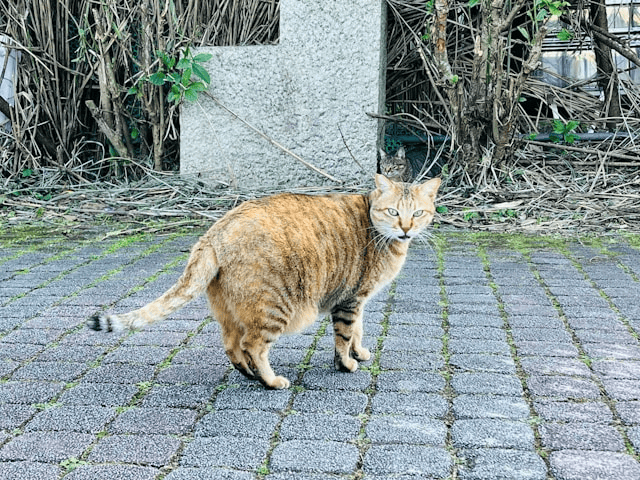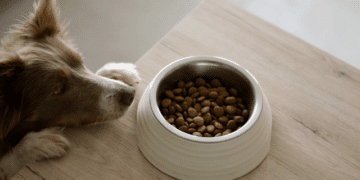Caring for a pregnant pet is a unique and rewarding experience that requires patience, attention, and the right knowledge. Whether you’re preparing for a litter of puppies, kittens, or another kind of newborn, it’s important to ensure your furry friend has everything she needs for a safe and healthy pregnancy.
From understanding pet pregnancy signs to supporting her through labor and postpartum care, this guide will walk you through every essential step of caring for a pregnant pet.
Recognizing Pregnancy in Pets
Before you begin planning for new arrivals, you’ll need to confirm whether your pet is actually pregnant. Pet pregnancy signs can vary depending on the species and individual animal, but here are a few common indicators to watch for:
-
Behavioral changes: Your pet may become more affectionate or withdrawn.
-
Appetite shifts: Some pets eat more, while others may go off food in early pregnancy.
-
Weight gain and abdominal swelling: This becomes more noticeable mid to late pregnancy.
-
Nipple changes: Enlarged or pinker nipples are often a sign, especially in dogs and cats.
The best way to confirm pregnancy is through a veterinary exam. Your vet may use an ultrasound, blood test, or physical examination to determine pregnancy and estimate due dates.
Veterinary Care During Pregnancy
Caring for a pregnant pet should begin with a trip to the veterinarian. Regular checkups ensure the mother is healthy and that the pregnancy is progressing as it should.
Important vet care steps include:
-
Initial confirmation and prenatal exam
-
Deworming and parasite control, as some parasites can harm unborn offspring
-
Vaccination review, though most vaccinations are avoided during pregnancy unless absolutely necessary
-
Monitoring for high-risk complications, such as gestational diabetes or eclampsia in dogs
If you’re unsure what to expect, your vet can guide you through a tailored pregnancy plan based on your pet’s breed, size, and medical history.
Nutrition for Pregnant Pets
One of the most crucial aspects of pregnant pet care is proper nutrition. A developing litter puts additional demands on the mother’s body, and her diet needs to meet those needs to keep both her and the babies healthy.
Key nutrition tips:
-
High-quality, nutrient-dense food is essential. Most vets recommend switching to a premium puppy or kitten formula halfway through pregnancy, as these contain higher levels of calories, protein, and essential nutrients.
-
Avoid overfeeding early on. Caloric needs increase more significantly in the last third of pregnancy.
-
Supplements may be needed, but only under veterinary guidance. Too much calcium or other nutrients can be harmful.
-
Feed smaller, more frequent meals in the later stages as the mother’s stomach has less room.
Every pet is different, so always consult your vet about the best diet and feeding schedule for your pregnant dog or cat.
Creating a Comfortable Environment
A calm, clean, and safe environment is vital for any pregnant pet. As her due date nears, she’ll instinctively look for a place to nest and give birth.
Set up a nesting area:
-
Choose a quiet, low-traffic space in your home
-
Use clean, soft blankets or towels
-
Avoid placing the area near loud noises or other animals
-
Make sure the space is temperature-controlled and easy to clean
Your pet may begin nesting behavior days before giving birth. Allow her to explore and get comfortable in the area you’ve set up for her.
Exercise and Activity Guidelines
Staying active is still important for pregnant pets, but you’ll need to adjust their routines as the pregnancy progresses.
General activity advice:
-
Light walks or play are encouraged, especially in the early weeks
-
Avoid high jumps, roughhousing, or strenuous activities
-
Let her set the pace if she seems tired or uninterested in exercise, don’t push her
Exercise helps maintain muscle tone and reduces the risk of complications, but always prioritize your pet’s comfort and safety.
Signs of Labor and When to Call the Vet
As your pet nears labor, you’ll want to be prepared. Understanding what to expect can make this part of the journey less stressful for both of you.
Signs labor is near:
-
Restlessness, nesting, or digging behavior
-
Decreased appetite
-
Drop in body temperature (below 100°F in dogs, for example)
-
Panting, trembling, or licking at the genital area
Labor can last several hours and usually progresses through several stages. Most healthy pets can deliver without human intervention, but it’s important to know when something is wrong.
Call your vet immediately if:
-
Your pet strains for more than 30–60 minutes without delivering
-
There’s more than 2 hours between puppies or kittens
-
You see green or bloody discharge before any babies appear
-
Your pet appears in distress or overly lethargic
Preparing a list of emergency vet numbers ahead of time can make all the difference in a crisis.
Postnatal Care Basics
Once the babies are born, the mother’s care journey is far from over. In fact, the first few weeks after delivery are just as critical.
Support includes:
-
Ensuring the mother eats and drinks enough to support milk production
-
Keeping the nesting area clean and warm
-
Monitoring all newborns for weight gain, nursing, and general health
-
Watching for signs of postpartum complications in the mother, like fever, discharge, or mastitis
Avoid unnecessary handling of newborns in the first few days. Let the mother bond and nurse in peace while you quietly supervise.
Final Thoughts
Caring for a pregnant pet involves more than just love and attention it requires informed decisions, preparation, and a close relationship with your veterinarian. From understanding pet pregnancy signs to preparing for labor and delivery, your role as a caregiver can make all the difference in ensuring a healthy outcome for your furry friend and her babies.










